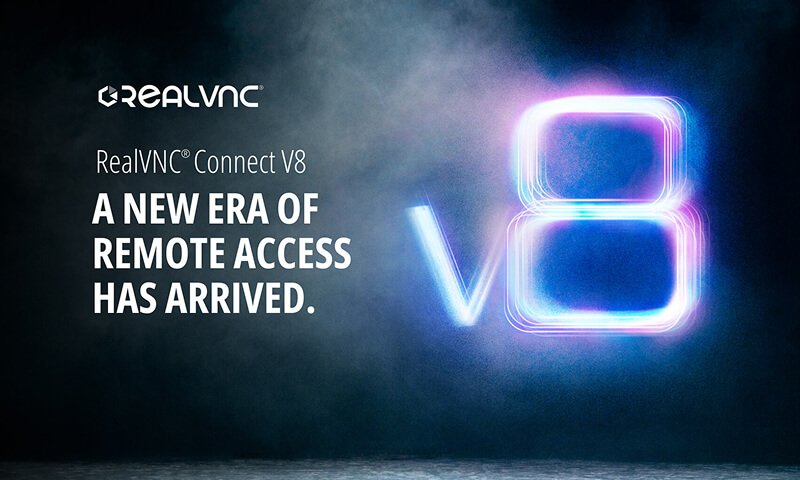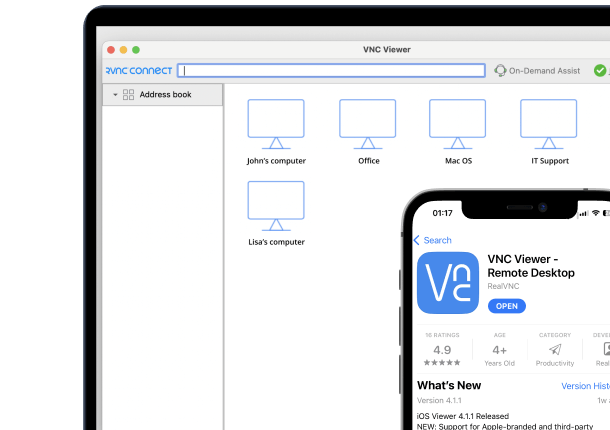Remote Desktop Protocol (RDP) is a widely used tool in modern remote work and IT management. As more organizations rely on remote connections, tools like RDP are becoming more important as well. This guide will discuss RDP, how it works, and the best practices for using it.
What is Remote Desktop Protocol (RDP)?
Remote Desktop Protocol is a secure network communication protocol engineered by Microsoft. It’s designed to enable secure virtual access to desktop computers. This technology lets users access their work computers from almost any location and lets network managers remotely diagnose problems.
RDP is supported across numerous platforms, including macOS, Linux, Unix, Google Android, Apple iOS, and Windows operating systems since Windows XP. There’s also an open-source version for consumers looking for flexibility outside the usual proprietary limitations.
That said, while RDP is a strong option for remote desktop sessions, there are other remote access protocols available. One alternative is RealVNC Connect. In addition to what RDP offers, RealVNC Connect also offers cross-platform compatibility and extra security measures. Companies that want a more tailored remote desktop session should take a look at both options to see which one fits their use case better.
How RDP Works
RDP allows a client device to connect securely to a remote computer or server via a series of commands. It works somewhat like a remote-controlled car. When you push a button on the controller, it relays the command to the car. The car then listens to that signal and moves forward.
In this case, the controller is the RDP client giving the command, and the car is the server that receives the command and carries it out.
Here’s how Remote Desktop Protocol works exactly. The RDP client forwards the command—like keyboard strokes or mouse clicks—that a user enters to the server, like a Windows server. After processing the commands, the server reports back to the client what happened, such as a screen update or a notification sound.
So just like how you tell a remote-controlled car what to do from a distance, RDP’s continuous command exchange lets you control the remote machine from anywhere. Each action is executed almost instantly, enabling seamless remote system interaction with the local computer independent of physical distance.
By default, RDP includes encryption, which protects data exchanges between the RDP client software and the RDP servers throughout the session. This creates an encrypted communication channel, safeguarding critical information throughout remote sessions.
In terms of communication, RDP uses TCP/IP, which is a widely used standard for a secure network communications protocol.
A single RDP connection enables access to one session, but multiple users can connect to a terminal server through terminal services. Typically, it uses port 3389. Administrators sometimes reconfigure this port, however, to improve security and limit possible exposure.
In contrast, RealVNC Connect takes advantage of the Virtual Network Computing (VNC) technology. It approaches remote connections differently by providing broader cross-platform compatibility.
Features and Properties of RDP
RDP’s built-in features and properties support safe and effective remote access between client devices and remote servers.
- Secure Connections: RDP creates a safe environment using encrypted communication between clients, servers, and virtual machines.
- Encryption: RDP uses strong encryption techniques to guard data in transit, preserving client-server confidentiality and integrity.
- Data Compression: RDP reduces the amount of data transmitted over the network using compression, which improves performance and maintains session quality, especially on slower networks.
- Cross-Platform Support: RDP gives users flexibility when working in different contexts by being compatible with macOS, Linux, and Windows devices, among many others.
- Virtual Desktop Support: RDP enables remote management and access to virtual desktops, allowing users to operate computing environments from remote locations securely.
- Framing: RDP uses framing techniques to optimize data packet transmission, contributing to more responsive and stable remote sessions.
- Enhanced Session Mode: A mode that offers advanced features like improved graphics and extended functionality.
- Remote Data Storage: RDP has a reduced possibility of physical data leaks and loss compared to local storage.
RealVNC Connect not only provides similar features, but it also emphasizes cross-platform capability and robust security measures.
Remote Desktop Connection Use Cases
RDP is a major factor that contributes to flexible and secure remote solutions within different industries. It has three primary use cases:
- Remote Access: RDP lets employees safely connect to their home or workplace PCs from anywhere. Remote workers and frequent travelers particularly benefit from this capability since it allows them to access local ports, data, apps, and network resources on their home or office PC.
- Remote Support: RDP allows IT staff to access user desktop computers for remote troubleshooting. Allowing IT professionals to identify and fix problems promptly minimizes the need for onsite visits, limiting end-user downtime.
- Remote Administration: RDP enables system administrators and technicians to configure, manage, and maintain remote devices or servers. This is especially useful when managing multiple systems, conducting software updates, or performing system configurations across distributed environments.
RDP Server Security Concerns
RDP poses several security challenges that can expose systems to unauthorized access. These risks, which comprise typical cybersecurity flaws with RDP-specific concerns, call for strict oversight to prevent exploitation. Companies depending on RDP for remote access should address these weaknesses to keep their operations secure.
- Weak Sign-in Credentials: Passwords that are weak or too simple run the risk of brute-force attacks. This is where attackers manually but repeatedly guess a password to get unauthorized access to the RDP server software.
- Unrestricted Access to Port 3389: Leaving the default Port 3389 open may attract possible attackers. Cybercriminals tend to scan for networks with open RDP ports to intercept them.
- Unpatched Vulnerabilities: Ignoring server patches and upgrades exposes systems to known security issues.
- Limited Efficiency Compared to Cloud Solutions: Although functional, RDP does lack the agility of cloud-based services. These provide more effective scalability for remote workers, especially in companies running large and dispersed teams.
Securing Your Remote Desktop Connection
The average cost of a data breach in 2024 is $4.88 million. Knowing how vulnerable RDP is to pass-the-hash, worms, and brute-force attempts, precautionary measures are important to improve your RDP security. Here’s how to better safeguard your remote desktop access.
- Strong Password Management: Requiring regular updates and mandating complicated passwords lowers the possibility of brute-force attacks targeted at weak credentials.
- Firewall Configuration for RDP: Configuring firewalls to restrict access to RDP ports reduces the susceptibility of your network to external dangers.
- In-Depth Defense: Layering security measures—such as encryption, multi-factor authentication, and intrusion detection systems—creates multiple barriers that attackers must breach.
- Principle of Least Privilege: Allowing users the minimum access required for their tasks minimizes the likelihood of privilege escalation and unauthorized use.
- Limit Access to Authenticated Users: Restricting RDP connections to only authorized users pre-approved by the system admin lowers the risks of malicious access.
RDP vs. VPN: What’s the Difference?
Though they both offer remote features, RDP and Virtual Private Network (VPN) serve different purposes.
RDP connects to a given remote resource, usually a physical or virtual desktop. It’s especially helpful for troubleshooting or accessing a work computer from a different location.
Meanwhile, a VPN generates a safe network route that grants access to a company’s broader network resources. Offering a more all-encompassing remote connection, a VPN lets users access files, apps, and services as if they were linked to the inside network.
In short, while VPN concentrates on allowing access to a greater range of network resources, RDP’s focus is on letting users control their individual workstations.
Alternatives to RDP
As mentioned, there are several remote desktop services with similar—if not the same—capabilities. Each tool has its strengths, so picking the right one depends on the company’s needs.
- Screens by Edovia: This remote desktop option offers intuitive screen-sharing and remote control for teams and individuals needing quick access to remote computers.
- Zoho Assist: Thanks to its strong security and simple interface, Zoho Assist is perfect for IT workers who need to manage and fix systems from afar.
- Citrix HDX: Citrix HDX provides powerful remote access in virtual desktop environments—ideal for enterprise-level installations.
- PC over IP (PCoIP): By compressing and encrypting data before transmission, PCoIP can support companies with strict security needs.
- VMware Blast Extreme: Known for its efficient performance in virtualized environments, VMware Blast Extreme offers responsive and secure remote desktop connections.
- RealVNC: RealVNC stands out for its cross-platform compatibility, strong security features, and ease of use, making it a reliable choice for both remote work and IT support.
Setting Up a Secure RDP Connection
Setting up a secure RDP connection on Windows requires several crucial actions.
These steps will show you how to set up a secure RDP session.
- Enable Remote Desktop on the remote server or PC.
- Go to the Windows Settings menu.
- Select System, and under the options, choose Remote Desktop.
- Activate the Remote Desktop feature to allow remote connections.
- Choose Remote Desktop Connection from the taskbar on your client machine.
- Enter the name of the local PC you want to remotely access.
- Press Connect to start the remote session.
- Implement network-level authentication for added protection, and restrict access to only authorized users to minimize security risks.
Troubleshooting Common RDP Issues
You may experience technical issues with RDP. Immediately fixing problems like lost connections, slow response times, and security risks is important.
Here are some common RDP problems:
- Connection settings mismatch: Ensure that the RDP connection settings on the client and the server are properly configured.
- Port issues: Check the RDP server components to make sure all required ports are open and properly managed.
- Poor connection quality: Look for any restrictions/bottlenecks in the internal networks that can compromise the remote session performance.
- Security misconfigurations: Check the firewalls and other security settings to make sure that encryption methods are in place.
- Performance degradation: Optimize your RDP display and system settings to improve session performance.
Best Practices for RDP Management
The effective management of Remote Desktop Protocol is key to optimal performance. Plus, this ensures that your systems can remain free from unauthorized access.
Let’s look at techniques that will improve operational integrity and security.
- Implement secure settings: Limit RDP access to just authenticated users.
- Update and patch regularly: Installing the latest security patches in both the RDP server and client software helps prevent malicious entities from exploiting potential vulnerabilities.
- Use strong, complex passwords: All RDP accounts need sophisticated passwords.
- Enable two-factor authentication: 2FA provides an additional layer of protection.
- Monitor RDP traffic: Continuous monitoring will help you detect issues early.
Conclusion
Remote Desktop Protocol is a safe and effective way to connect to physical desktop computers from afar. It’s certainly becoming more important, especially in the context of cybersecurity.
But while RDP is a strong choice, it’s important not to overlook alternatives like RealVNC Connect. RealVNC Connect has some clear benefits, such as the ability to work on multiple platforms and additional security features that may make it better for some practical needs. Only by evaluating these options against your company’s requirements will you get the most reliable and efficient remote access strategy.
FAQs
What is RDP used for?
RDP allows remote access to computers. It’s mainly used for IT management and troubleshooting. Businesses also use RDP for remote work, as it enables seamless access from various locations.
Is RDP a VPN?
RDP is not a VPN. Both are used for remote connectivity, but their purposes are different. RDP allows access to a specific desktop, while a VPN secures access to an entire network.
What is an example of an RDP?
Microsoft’s Remote Desktop Connection is one common example. It allows users to control computers remotely, working over a network connection. Many businesses use it to manage their operations remotely as well.
Why do hackers use RDP?
Hackers exploit weak RDP passwords for access. They use RDP to infiltrate systems remotely, which opens paths for them to install malware.
How does RealVNC Connect compare to RDP?
RealVNC Connect offers better cross-platform compatibility. It also provides more flexible security features. RealVNC Connect is a strong alternative to standard RDP solutions for those in diverse environments.





